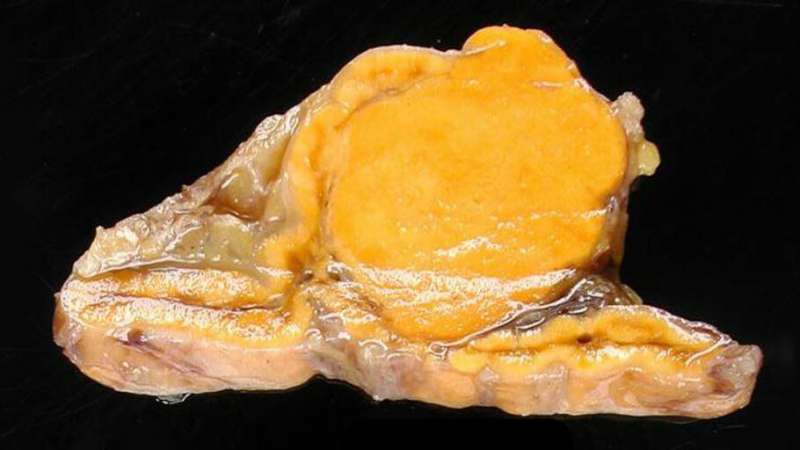New thermal ablation method for adenoma shows promise

Researchers from the USA (Kansas State University) and the Republic of Ireland (the National University of Ireland Galway) have completed a successful initial test of a new microwave thermal ablation technique, which could eventually be used to treat Conn's syndrome.
Conn's syndrome occurs when a benign adrenal gland adenoma causes the production of excess aldosterone, which leads to high blood pressure. Treatment for the condition is currently limited to two options: an adrenalectomy or intensive medical management with significant side effects.
The researchers' new technique, explained in Biomedical Physics and Engineering Express, could ultimately lead to a non-invasive treatment of small adenomas of up to 20 mm in size, without damaging surrounding tissue.
Hojjatollah Fallahi from Kansas State University, USA, is the study's lead author. He said: "Microwave Ablation (MWA) is a form of thermal ablation most often used to treat cancer. It uses electromagnetic waves in the microwave energy spectrum (300 MHz to 300 GHz) to heat tissue.
"However, tumour ablation devices and systems were developed to treat large tumours, by maximizing the size of the ablation zone. We wanted to overcome the challenge for adrenal ablation, where the objective is to treat small adenomas while minimizing thermal damage to non-targeted adrenal tissue and preserving adrenal function."
The international team suspected that water-cooled monopole antennae, operating at 2.45GHz and 5.8GHz, would allow the creation of short, round ablation zones from 10 to 20 mm in diameter.
To test this theory, they used a combination of computer modelling and ex vivo experiments with cow liver and adrenal gland tissue to investigate the ability to control ablation zone size, by adjusting antenna operating frequency, applied power, ablation duration, and coolant temperature.
Mr Fallahi said: "We found that small spherical ablation zones with diameters in the range of 7.4 – 17.6 mm can be obtained by adjusting the applied power and ablation duration. An analysis of the experimentally-measured ablation zone dimensions showed that frequency of operation and ablation duration are the main parameters for controlling the ablation zone length and width, respectively.
"We also discovered that the coolant temperature provides another effective parameter for controlling the ablation zone length, without affecting the ablation zone width.
"Our results demonstrate the feasibility of creating small spherical microwave ablation zones, suitable for targeting benign adrenal adenomas. Further work is now needed to examine the applications of the technique in more depth and establish if it is suitable for use in human patients with Conn's syndrome."
More information: Hojjatollah Fallahi et al. Microwave antennas for thermal ablation of benign adrenal adenomas, Biomedical Physics & Engineering Express (2019). DOI: 10.1088/2057-1976/ab068b

















